Clancy Tucker's Blog, page 168
November 27, 2017
28 November 2017 - FILIPINO NURSE PAINTS WITH SYRINGES
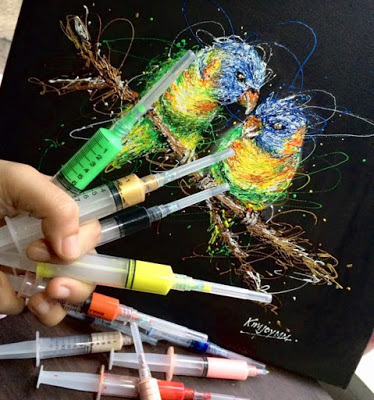
FILIPINO NURSE PAINTS WITH SYRINGES
G'day folks,
I'm always happy to promote clever people. Here is one of them.
Kimberly Joy Magbanua has always had a talent for drawing and painting, but never received any formal art training. Instead, she started working as a nurse, not knowing that she would one day be able to combine her profession and passion for the arts in a completely new art form – syringe painting.
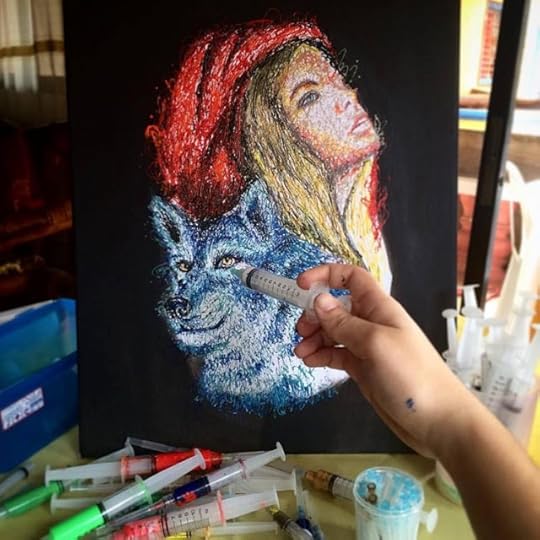
The 24-year-old nurse from Valladolid, Philippines, says that she got the idea to use syringes instead of paintbrushes about a year ago, as she was getting ready to give a patient an injection. They were a familiar tool, and despite being completely unrelated to painting, they just made sense to Kimberly, because they allowed her to scribble paint on a canvas. She had been scribbling with pens and pencils for a while, but she always wanted to try it on an actual canvas, and syringes just felt like the perfect tool to do it.

Through a lot of trial and error, Kimberly Joy Magbanua managed to perfect her syringe painting technique, and even though she continues to work as a nurse, she is now a celebrated artist as well. Her scribbled paintings have been featured on some of the biggest websites in the Philippines recently, and I’m willing to bet you’ll start seeing a lot more of her work in the coming days.
Kimberly starts her artistic process by drawing an outline of her subject on the canvas, using a pencil. She then colors the entire background black for an enhanced visual effect, before using several syringes filled with colored paints to scribble her design.
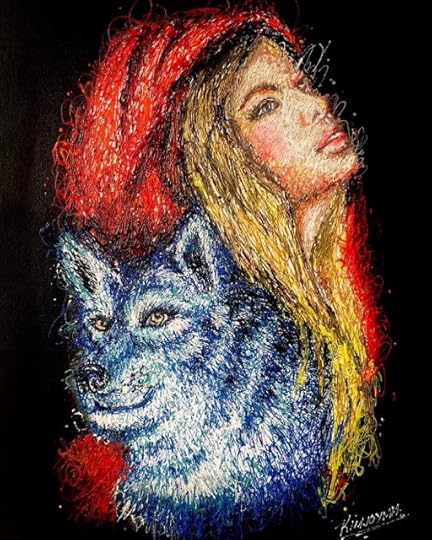
It usually takes her between 3 and 5 hours to complete a painting, during which time she replaces the needles several times because they get clogged up with paint.
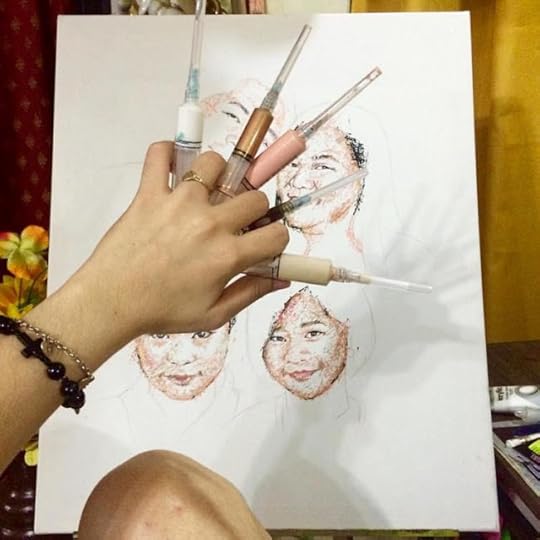
24-year-old Magbanua claims that the process of painting with syringes is not as straightforward as some people may think. Apart from controlling her movements while scribbling, she also has to apply just the right pressure on the syringe plunger to release the right amount of paint, or risk having the needle pop off, ruining the whole painting.







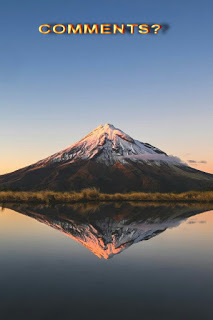
Clancy's comment: Wow. Love ya work, Kimberley Joy! Filipino people are very clever, especially when it comes to music.
I'm ...


Published on November 27, 2017 11:38
November 26, 2017
27 November 2017 - TRICKS OF THE BOOTLEGGERS
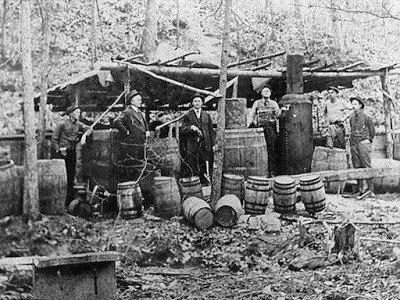
TRICKS OF THE BOOTLEGGERS
G'day folks,
Bootleggers in the days of prohibition, used many tricks to avoid detection. The crazier the caper, the more it reflects just how much money this black market trade was bringing in, and of course, just how much America wanted its booze back.

Cow shoes were used by bootleggers to cover their footprints in the woods going to and from Moonshine brewery sites were hidden. The hoof prints were supposed to deter law enforcement who often tried tracking criminal operations by looking for human footprints in the forest.

A 1922 article from a now-defunct St. Petersburg, Florida newspaper called the Evening Independent, had the story…
“Shiners wear cow shoes”
A new method of evading prohibition agents was revealed here today by A.L. Allen, state prohibition enforcement director, who displayed what he called a “cow shoe” as the latest thing front the haunts of moonshiners.The cow shoe is a strip of metal to which is tacked a wooden block carved to resemble the hoof of a cow, which may be strapped to the human foot. A man shod with a pair of them would leave a trail resembling that of a cow.
The shoe found was picked up near Port Tampa where a still was located some time ago. It will be sent to the prohibition department at Washington. Officers believe the inventor got his idea from a Sherlock Holmes story in which the villain shod his horse with shoes the imprint of which resembled those of a cow’s hoof.

By the 1920s, all conceivable products were used to disguise and camouflage alcohol shipments, from Holy bibles to canned fruit (floating in alcohol) to Christmas tree packaging– and my least favourite: carloads of pig carcasses stuffed with whiskey.
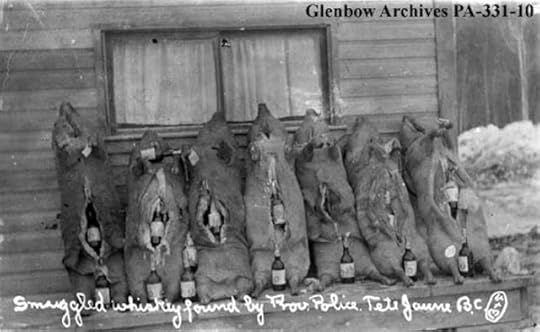
Long before Pablo Escobar and his Colombian buddies were sending cocaine through the jungles in homemade submarines, the Prohibition bootleggers were firing torpedoes laden with whiskey from Canadian waters to the American side of the Great Lakes.

With the supply of alcohol cut off, rum runners turned to Canada, which had favourable liquor laws. Near the Canadian border, Detroit became a bootlegger’s dream town during the Prohibition, especially the Detroit River, Lake St. Clair, and other waterways between Michigan and Ontario.

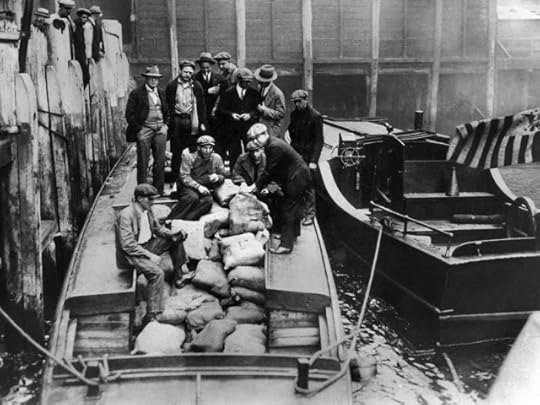

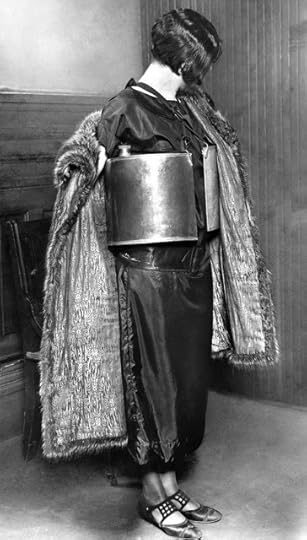


Clancy's comment: Ingenious, eh? I'm starting to feel thirsty.
I'm ...
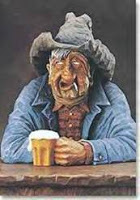

Published on November 26, 2017 12:48
November 25, 2017
26 November 2017 - FACTS ABOUT THE CHINCHILLA

FACTS ABOUT THE CHINCHILLA
G'day folks,
Chinchillas are highly sociable animals. In the wild they live in colonies of over 100 individuals.

Quick FactsType: MammalDiet: HerbivoreLifespan: 10-20 yearsSize: 18-20 cmWeight: 400-500 gHabitat: Mountanous regionsRange: South AmericaScientific name: Chinchilla Lanigera Amazing Facts About the Chinchilla Chinchillas originate from the Andean Mountains of South America.Wild chinchillas are endangered, primarily due to hunting pressure from humans who prize their pelts. Over 100 chinchillas are required to make just one coat.Chinchillas are very inquisitive and love to explore their surroundings.Chinchillas have particularly dense fur. This allows them to survive in colder regions. Humans have one hair per folicle, while chinchillas have between 60 and 90 per folicle.Chinchillas have adapted to live in rock crevices and holes in mountains up to and over elevations of 4,000m. Their red blood cells are able to take up far more oxygen than other closely related species e.g. rabbits. This helps them to survive at such high altitudes. Chinchillas are extremely agile, being able to jump up to six feet in the air!Chinchilla’s hearing ability is very similar to humans.Chinchillas are nocturnal, being more active during the night.Like rabbits, chinchillas perform a behaviour called caecotrophy, where they ingest specific droppings in order to ensure they get the required level of nutrition from their food.Chinchillas are sometimes kept as pets though animal protection organisations such as OneKind are concerned that their needs cannot be met fully in captivity.
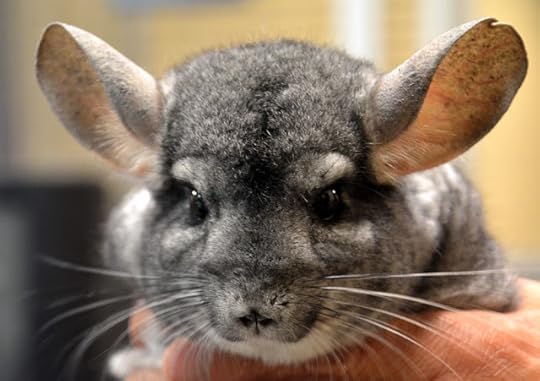

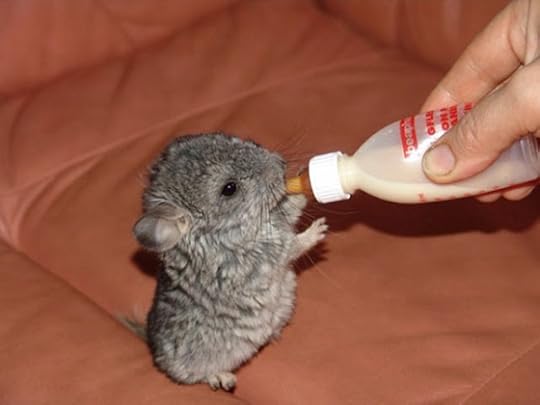
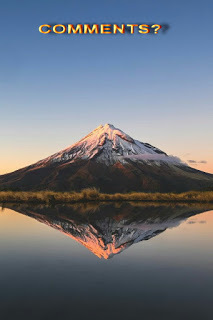
Clancy's comment: Pretty cute, eh?
I'm ...

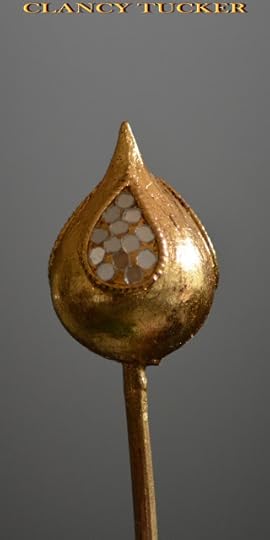
Published on November 25, 2017 12:25
November 24, 2017
25 November 2017 - D. PAUL SCHAFER - GUEST AUTHOR
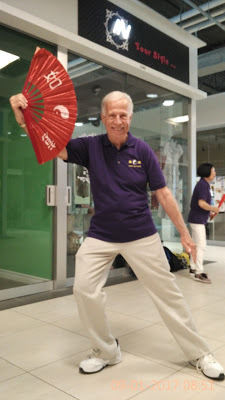
D. PAUL SCHAFER - GUEST AUTHOR -
G'day folks,
Today, I interview a man who has had an illustrious career, and is driven by his passion.
Welcome, Paul ...
1. TELL US A LITTLE ABOUT YOURSELF AND YOUR WRITING JOURNEY.
I have worked in the cultural field for more than fifty years as an educator, administrator, author, and adviser. Prior to this, I taught economics at several Canadian universities.
My journey as a writer has also been a mission. I believe it is necessary to pass out of the present economic age and into a future cultural age if environmental sustainability and human welfare and well-being are to be assured in the years and decades ahead. Most of my research and writing over the years has been concerned with this matter in one form or another.
2. WHEN AND HOW DID YOU BECOME A WRITER?
I have been writing since my career commenced in the early nineteen-sixties. However, this intensified considerably when I created the World Culture Project in 1988 to commemorate the World Decade for Culture and Development established by UNESCO and the United Nations.
The World Culture Project is committed to creating a body of literature that can demonstrate in practical and theoretical terms how a cultural age can be realized and the central role culture, cultures, and the arts are capable of playing in this.
Producing this body of literature has required a great deal of research into the development of culture as an idea and a reality. It has also required writing many articles and books, such as Culture – Beacon of the Future, Revolution or Renaissance: Making the Transition from an Economic Age to a Cultural Age, The Age of Culture, and The Secrets of Culture.
Information on this literature is available in the Publications section of the World Culture Project website: www3.sympatico.ca/dpaulschafer
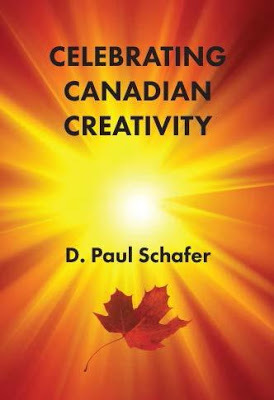
3. WHAT TYPE OF PREPARATION DO YOU DO FOR A MANUSCRIPT? DO YOU PLAN EVERYTHING FIRST OR JUST SHOOT FROM THE HIP?
I plan everything in advance by creating a detailed outline of an article or book before I do any writing. However, I often add ideas to the outline that occur to me once the writing has commenced that were not in the original outline.
4. WHAT DO YOU ENJOY MOST ABOUT BEING A WRITER?
I enjoy the opportunity to express my beliefs and ideas about the need for a cultural age and the centrality of culture, cultures, and the arts and share these beliefs and ideas with others.
5. WHAT IS THE HARDEST THING ABOUT BEING A WRITER?
The hardest thing for me is to express myself as clearly and simply as possible, as well as to say exactly what I mean in order to avoid any confusion or misunderstanding. This requires going over manuscripts many times to ensure that I have expressed myself in a manner that is consistent with what I really want to say and the way I want to say it. This is extremely time-consuming but very rewarding because I have done this to the best of my ability.
6. WHAT WERE YOU IN A PAST LIFE, BEFORE YOU BECAME A WRITER?
Before I became a writer, I was involved in teaching economics for several years. However, I left economics because economics as a discipline ignored the natural environment during the entire time it was developing in the eighteenth, nineteenth, and twentieth centuries and I didn’t think it was possible to insert the natural environment into this discipline after the fact. While I recognized the enormous benefits that have resulted from placing an extremely high priority on economics and living in an economic age, I don’t feel this age is sustainable in the future due to the incredible demands it is making on the natural environment, the world’s limited resources, and the finite carrying capacity of the earth.
After leaving economics, I entered the cultural field by working at the Ontario Arts Council and after this as a founder and director of the first academic program for training arts administrators and cultural policy-makers in the world at York University in Toronto.
Following this, I worked as a self-employed person for many years, which included doing a lot of contractual work and undertaking many projects and missions for UNESCO. While I wrote many reports and documents during this time, they were primarily for international organizations, governments, and art service organizations and didn’t have a great deal to do with the case I wanted to make for the centrality of culture, cultures, and the arts in global development and human affairs as well as the necessity of a cultural age. This came later when I created the World Culture Project.
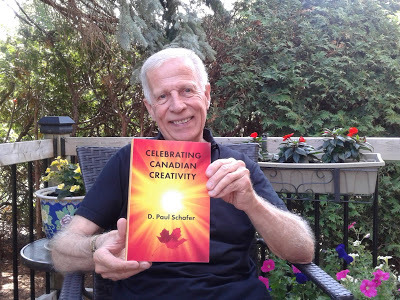
7. WHAT IS YOUR GREATEST WRITING ACHIEVEMENT?
I feel my greatest achievement has been to make the case for the centrality of culture, cultures, the arts, and a cultural age and provide detailed reasons and justifications for this. This has necessitated delving deeply into the character of culture in all its diverse aspects and manifestations, as well as evolving an all-encompassing, holistic understanding of culture and cultures that extends from the way people visualize and interpret the world, organize themselves, and conduct their affairs to the way they elevate and enrich life and position themselves in the natural, historical, and global environment.
This case is set out in two major books I have written on this matter – Culture – Beacon of the Future and Revolution or Renaissance: Making the Transition from an Economic Age to a Cultural Age. These books are available in English and Chinese.
8. WHAT ARE YOU WORKING ON AT THE MOMENT?
I am working on a book that makes the case that the world is really composed of culture and cultures at its core and in its fundamental essence. I am also working on a book of short stories that are concerned with memorable experiences I had during my youth, as well as the experiences of our two daughters during their youth.

9. WHAT INSPIRES YOU?
I am inspired by the desire to see a cultural age become a reality. I think the biggest challenge confronting humanity at present is to make it possible for all people and all countries to enjoy reasonable standards of living and a decent quality of life without straining the globe’s finite resources and limited capacity to the breaking point. I believe culture has a crucial role to play in this. I am also inspired a great deal by music. I think music is the highest art form and one of the most essential activities in life.
10. WHAT GENRE DO YOU WRITE?
All my writings are non-fictional. While most of my earlier writings were intended for an academic audience, most of my recent writings have been written for a much broader and more general audience. This has necessitated a major change in my writing style, especially in terms of sharing more of the personal and professional experiences I have had in the cultural field at every level – municipal, regional, national, and international – as well as in many different parts of the world with as many people as possible.
11. DO YOU HAVE ANY TIPS FOR NEW WRITERS?
My only suggestion would be to persevere with the quest to become a writer, regardless of whether it is on a part-time or full-time basis. There is a great deal of inspiration that comes from getting things published. This can provide the motivation that is required to continue writing when things appear bleak or hopeless.
12. DO YOU SUFFER FROM WRITER’S BLOCK?
I have never suffered from writer’s block when I am writing a book or an article. However, I have often suffered from not knowing what to write next after I have finished writing something and had it published. I am trying to overcome this by deciding well in advance what I should be writing after an existing project has been completed so that I don’t experience a painful gap in my writing plans and progress.
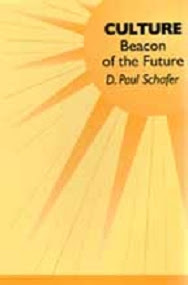
13. DO YOU HAVE A PREFERRED WRITING SCHEDULE?
My writing schedule is very consistent. I write every day, even if it is for only a short period of time and I am not able to accomplish very much. I usually write about more important things in the morning and less important things in the afternoon. This is accompanied by a lot of walking and exercising. Like Henry David Thoreau, Bertrand Russell, and other authors, I find walking very helpful in thinking things out, seeing where I am going from day to day and week to week, and planning things for the future. 14. DO YOU HAVE A FAVOURITE WRITING PLACE?
I used to sit in an easy chair when I was writing things out long hand and cutting and pasting before they were published. However, with the advent of the computer, I now do most of my writing at the computer, especially after I learned to use the computer to the point where I could produce material in draft form, cut and paste, and edit directly on a screen. I usually have music playing in the background when I am writing.
15. WHAT IS YOUR GREATEST JOY IN WRITING?
My greatest joy is getting articles and books published and reading them over once they are published. While I would probably continue to write even if my writings were only available in electronic form, I must say I find this far less fulfilling. There is something about holding a book or a journal in your hands and reading it in this form that is much more enjoyable than reading it on a screen or tablet of some kind.
16. WHO IS YOUR FAVOURITE AUTHOR AND WHY?
I do not have a favourite author. Since much of my life has been concerned with broadening, deepening, and intensifying knowledge and understanding of culture and cultures, this has required reading the works of numerous anthropologists, sociologists, cultural historians, philosophers, and so forth. I particularly enjoy the writings of cultural scholars such as Alfred Kroeber, Ruth Benedict, Pitirim Sorokin, Karl Weintraub, Lewis Mumford, Joseph Campbell, Matthew Arnold, Goethe, and several others in this respect.
17. WHAT’S THE GREATEST COMPLIMENT YOU EVER RECEIVED FROM A READER?
The greatest compliment has been that something I wrote was helpful to another person and inspired them in some way.
18. WHAT WAS THE WORST COMMENT FROM A READER?
The worst comment was that my beliefs and ideas were too idealistic and theoretical and would not be achieved in fact.
19. WRITERS ARE SOMETIMES INFLUENCED BY THINGS THAT HAPPEN IN THEIR OWN LIVES. ARE YOU?
I think my writing has been strongly influenced by my early upbringing. When I was young, my parents gave me piano lessons, singing lessons, put me in a choir, read stories to me, took me to many concerts and plays, and provided a wonderful cultural environment in our home. It has also been strongly influenced by my travels in North America, Europe, and other parts of the world. This has made it possible for me to experience many cultures in the world first hand.
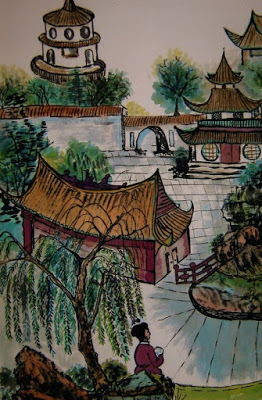
20. OTHER THAN WRITING, WHAT ELSE DO YOU LOVE?
I love doing tai chi and qi gong for a couple of hours every morning. I also love practising the piano, brush painting, listening to music, taking long walks in the country and the forest, and especially helping people.
21. DID YOU HAVE YOUR BOOK / BOOKS PROFESSIONALLY EDITED BEFORE PUBLICATION?
All of my most important books have been edited by professional editors. While this has improved the quality of these books considerably, I am occasionally disturbed by the fact that the meaning of some passages in my books get altered in the editing process and no longer says what I intend to say. Fortunately, all the editors I have worked with are sensitive to this matter and have been willing to let me revert back to the original or change things accordingly.
22. DESCRIBE YOUR PERFECT DAY.
My perfect day consists of accomplishing some important writing, doing my exercising and walking, helping someone, and enjoying some time with my wife Nancy and our children Charlene and Susan.
23. IF YOU WERE STUCK ON A DESERT ISLAND WITH ONE PERSON, WHO WOULD IT BE? WHY?
It would definitely be with my wife Nancy. We have been together for almost fifty years now and married for more than thirty. We are best friends in addition to being husband and wife, can talk about many different things, and are totally at ease with one another.
24. WHAT WOULD YOU SAY IF YOU HAD THE CHANCE TO SPEAK TO WORLD LEADERS?
I would say that the present global system is not working and a new global system is required to deal with the difficult and dangerous problems confronting humanity. I would then explain why I think it is imperative to have a global system based on culture, especially if we are to be successful in coming to grips with climate change, global warming, the environment crisis, huge disparities in income and wealth, and escalating conflicts and tensions between the many different social and ethnic groups, races, religions, countries, and civilizations.
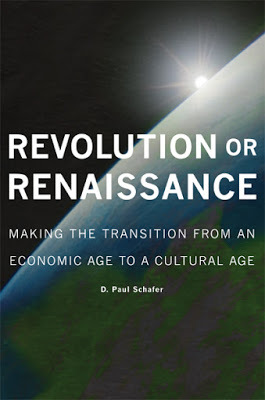
25. WHAT ARE YOUR PLANS FOR THE FUTURE?
I plan to continue making the case for the centrally of culture, cultures, and the arts, as well as for a cultural age, as long as I can. I also intend to spend more time writing about Canada and the potential it possesses to play a leadership role in the world as an exemplar rather than empire builder.
When I created the World Culture Project in 1988, I divided it into an international component and a Canadian component. I did this so I could use the Canadian component as a case study to demonstrate how my beliefs and convictions about the centrality of culture, cultures, and the arts could be applied to a specific country in the world. This resulted in writing and publishing several monographs and two books on Canadian culture, most notably Canadian Culture: Key to Canada’s Future Development, Canada’s International Cultural Relations: Key to Canada’s Role in the World, Culture and Politics in Canada: Towards a Culture for All Canadians, and most recently, Celebrating Canadian Creativity and Will This Be Canada’s Century?
26. WHAT ARE YOUR VIEWS ON BOOK TRAILERS? DO THEY SELL BOOKS?
I have never had any experience with book trailers and don’t know if they play a useful role in selling books.
27. DO YOU SEE YOURSELF IN ANY OF YOUR CHARACTERS?
One of the books I wrote for the International Component of the World Cultural Project was The Cultural Personality. While it was designed to make the case that a new prototype of the human personality is required for the world of the future – a prototype based on culture and holism rather than economics and specialization – there are various aspects of this prototype that mirror my own life and the type of cultural life I am trying to live that demonstrates what it would be like to live in a cultural age.
28. DOES THE PUBLISHING INDUSTRY FRUSTRATE YOU?
There are times when the publishing industry frustrates me a great deal, especially with respect to the way some publishers treat authors in general and their own authors in particular, as well as the way certain publishers deal with the marketing and selling of books.
29. DID YOU EVER THINK OF QUITTING?
No. I have never thought of quitting and never will, despite the difficulties I have experienced being an author at times. Despite these difficulties, I really enjoy my work and experiences as an author and plan to maintain this role in the future. One of the major reasons for this is that am working with a wonderful publisher – David Stover, founder of Rock’s Mills Press – who is very committed to my writings and has published a number of my books on culture and Canadian culture over the last few years.
30. WHAT WAS YOUR FAVOURITE MANUSCRIPT TO WRITE? WHY?
My favourite manuscript to write was The Secrets of Culture. This is because it is based on my journey in life and the many professional and personal experiences I have had over the years to unlock culture’s deepest and most profound secrets. This book is semi-autobiographical in the sense that I used my quest to unlock the secrets of culture as a vehicle for shedding light on the central role culture is capable of playing in the world of the future. As John Stuart Mill said many years ago, the most important thing about a journey is not arriving at the destination, but rather the process and route that is taken to get there.
31. HOW WOULD YOU DEFINE ‘SUCCESS’ AS A WRITER?
I would define success in terms of how well a writer gets things down on paper in a form that is personally fulfilling and stimulating to readers, as well as getting things published and sold.
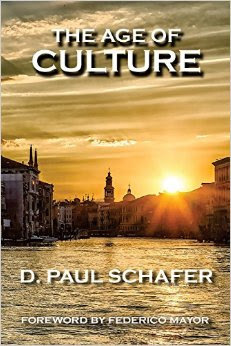
32. WHAT SHOULD READERS WALK AWAY FROM YOUR BOOKS KNOWING? HOW SHOULD THEY FEEL?
Readers should walk away knowing that I have put a great deal of effort into communicating with them, and that my ideas and beliefs are relevant to the world situation even if they are not in vogue at present. They should also feel good about the experience they had reading my books and conclude that this will help them in their lives in the future.
33. WOULD YOU LIKE TO HAVE YOUR BOOKS MADE INTO MOVIES? EVER WRITTEN A SCREENPLAY?
I don’t think my books are conductive to being made into movies and I have never written a screenplay.
34. HOW MUCH THOUGHT GOES INTO DESIGNING A BOOK COVER?
I think a great deal of thought and effort should got into designing a book cover because a good book cover is the key to giving potential readers a real impression of the overall nature and substance of the book. Being a believer in the adage that “a picture is worth a thousand words,” I tend to use images for covers that make powerful statements about the contents and character of the book. I especially like to use architectural edifices, natural landscapes, and sunrises and sunsets for this purpose, since concern for nature, the natural environment, and the power of symbols figures prominently in my writings.
35. WHAT’S YOUR ULTIMATE DREAM?
My ultimate dream is to see some positive signs that humanity is entering a cultural age. Such signs would include focusing far more attention and placing a much higher priority on the development of culture, cultures, and the arts in the world, making the shift from wealth to well-being, seeing more creativity, diversity, inclusivity, and equality throughout the world, and enhancing relations between the diverse peoples, countries, races, and religions of the world. Like Rabindranath Tagore, I believe “we must prepare the field for the cooperation of all the cultures of the world where all will give and take from each other. This is the keynote of the coming age.”
36. WRITING IS ONE THING. WHAT ABOUT MARKETING YOU, YOUR BOOKS AND YOUR BRAND? ANY THOUGHTS?
This is without doubt the biggest problem I face at present and will probably face in the future. To date, I have not given a lot of attention to marketing myself, my books, or my brand because I have been preoccupied with researching and writing about culture, cultures, cultural development, and the need for a cultural age. However, whenever I have worked on marketing, branding, and so forth, I have found that the results are not commensurate with the effort, especially in the modern world where there is so much competition for the attention of readers.
37. ARE YOUR BOOKS SELF-PUBLISHED?
I have not had any experience with self-published books.
38. DESCRIBE YOURSELF IN FIVE WORDS.
I am very cause-oriented.
39. WHAT PISSES YOU OFF MOST?
Nothing really pisses me off at present. However, this could change in the future, but I doubt it.
40. WHAT IS THE TITLE OF THE LAST BOOK YOU READ? GOOD ONE?
I have just finished reading Brian Holihan’s superb book Thinking in a New Light: How to Boost Your Creativity and Live More Fully by Exploring World Cultures. I would strongly recommend this book to readers who are interested in culture, cultures, and the need for a cultural age. It provides many wonderful insights and concrete examples into how experiencing spirituality and a sense of paradise on earth can be achieved by broadening, deepening, and intensifying our knowledge and understanding of the many diverse cultures in the world. I share his beliefs that there is an enormous amount to be learned from our own culture and the cultures of others, and that one of the greatest challenges of the future will be to expand education of all the many different cultures in the world.
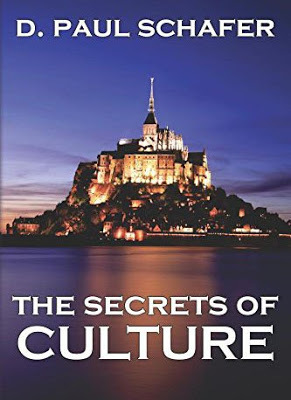
41. WHAT WOULD BE THE VERY LAST SENTENCE YOU’D WRITE?
We have barely scratched the surface of the rich potential culture possesses to lay the foundations and create the conditions for a more peaceful, harmonious, equitable, and fulfilling world.
42. WHAT WOULD MAKE YOU HAPPIER THAN YOU ARE NOW? CARE TO SHARE?
Seeing the same amount of attention and priority given to the development of culture and cultures over the next three hundred years that was given to the development of economics and economies over the last three hundred years. In order to achieve this, I believe it is necessary to interpret history from a cultural perspective and focus much more attention on the values, ideals, and potential of culture.
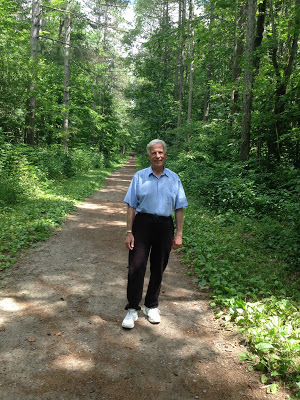
43. ANYTHING YOU’D LIKE TO ADD?
I think we need to begin a movement throughout the world to bring a cultural age into existence and would welcome your thoughts and suggestions on this.
In conclusion, I would like to thank Clancy Tucker for providing these questions and posting my answers to them on his blog, as well as to readers for reading my responses and reactions to the questions. This is much appreciated.
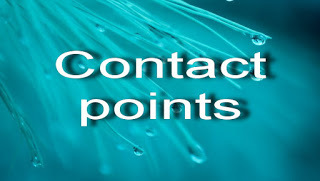
AMAZON
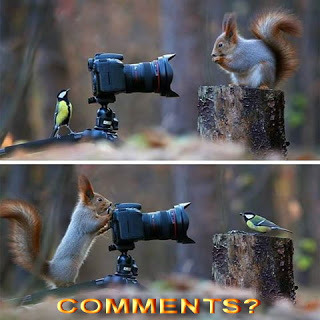
Clancy's comment: Thank you, Paul. I'm impressed by your determination and passion, and your brush painting. More people should follow in your shoes.
I'm ...

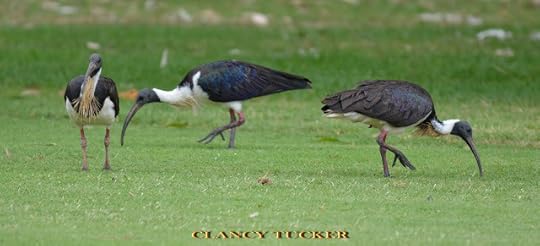
Published on November 24, 2017 11:32
November 23, 2017
24 November 2017 - CONSTRUCTION OF THE EIFFEL TOWER

CONSTRUCTION OFTHE EIFFEL TOWER
G'day folks,
Welcome to some rare photographs of one of the world’s most famous towers.
I had previously come across time-lapse photographs of the Eiffel Tower in its various stages of construction, but none like this; none that went behind the scaffolding, right up close inside the growing skeleton of what was to become one of the world’s most famous monuments in history.

Construction began in 1887, designed by Alexandre Gustave Eiffel (1832-1923) and the tower was finished in time for the 1889 Paris Exhibition. Despite the 18,038 pieces of wrought iron, 2.5 million rivets being used to build the 10,000 ton and 984.25 feet high man-made structure, only 300 workers were employed to build it (some reports even estimate it was only 200 workers).

And from the looks of it– not a single hard hat (although perhaps the odd top hat)!

The tower was built as a symbol of modern science and engineering, but lucky for us history buffs, another technology was also in its infancy phase — photography. The foundations of the tower were captured by various budding photographers of the time, most of their work now archived by the Musée d’Orsay .

Now, check out these amazing photographs.
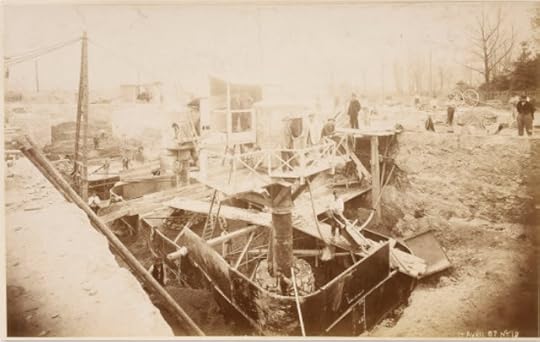



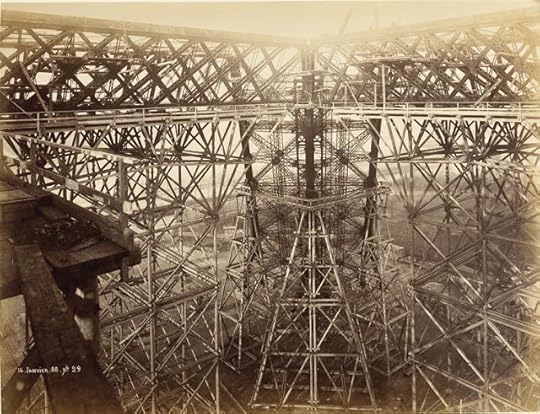





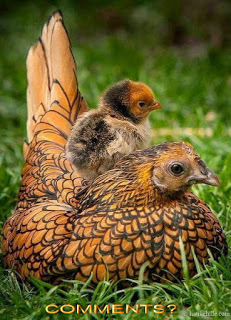
Clancy's comment: Great photographs. Great structure. I've been there as a tourist, but I certainly would not have been on the construction team.
I'm ...
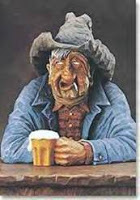
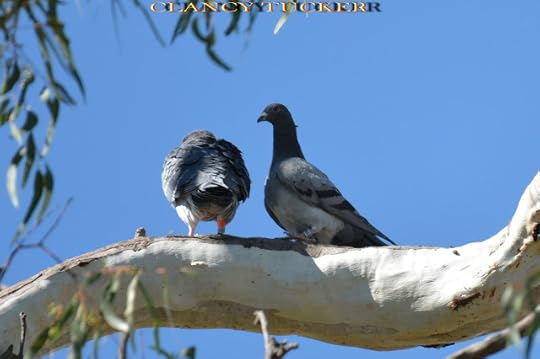
Published on November 23, 2017 11:26
November 22, 2017
23 November 2017 - FACTS ABOUT THE CHIMPANZEE
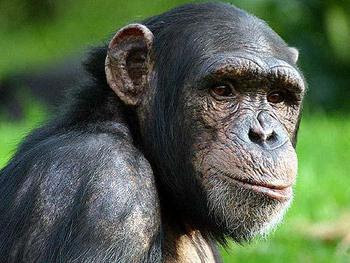
FACTS ABOUT THE CHIMPANZEE
G'day folks,Chimpanzees are the species of the great apes in the genus Pan, consisting of the common chimpanzee and the bonobo. Together with gorillas, they are the only great apes that are currently restricted in their range to Africa.
Researchers have proven that chimpanzees are self-aware and can anticipate the impact of their actions on the environment around them, an ability once thought to be uniquely human.
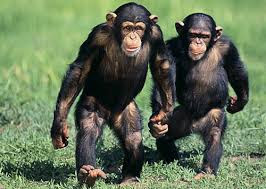
Quick FactsType: MammalDiet: OmnivoreLifespan: Average around 45 yearsSize: 1.2 - 1.7mWeight: 32 - 60 kgHabitat: Savannas, deciduous woodland, Montane forest, and rainforestRange: Equatorial AfricaScientific name: Pan troglodytes We, Homo sapiens, share 98.4% of our DNA with chimpanzees. Chimpanzees have the same bones and muscles as humans with differences only in form (e.g. their arms are longer than their legs). Adapted for quadrupedal movement and movement through the trees, chimpanzees have robust bodies and powerful arms. Because of their dense bones and muscle tissue, the upper body strength of a mature chimpanzee is 8-10 times that than that of humans.

Chimpanzees are black, but older individuals may have a grey back. Both genders often have short white beards. The ears are prominent. Infants have a white tail tuft and pink to brown facial skin, which darkens by adulthood. Chimpanzees have been shown to have their own individual personalities. Chimpanzees behave in a way indicating that they feel empathy. Chimpanzees live in fluid social groups consisting of a core of multiple females and dominant related males, whom are highly territorial and will routinely patrol their home boundaries. Females tend to live a more solitary life than the males, often choosing to spend much of their time alone with their offspring.

Chimpanzee infants are completely dependent on their mothers until about five years of age. When males are between the ages of 8-12 years, or adolescence, they will increase their independence and spend more time in the company of adult males. Females tend to remain close to their mothers during adolescence, becoming mature at age 11 but only beginning to breed at age 13-14. On average females will have about three offspring during their lifetime.Chimpanzees travel mostly on the ground but will mostly feed in trees during the day and make a new nest every night in the forest canopy to sleep.Their diet varies seasonally consisting mainly of fruit (~50-75%), but also leaves (~12-45%), flowers (~1-18%), seeds (~1-11%) and animal prey (~1-5%) such as grubs, termites, ants, wasps, birds and mammals including bush-pigs, duikers, rodents and even other primates. In the Ivory Coast chimpanzees will hunt together cooperatively to catch red colobus monkeys, the meat is much prized and its subsequent sharing strengthens male alliances and familial bonds.Chimpanzees have opposable thumbs and toes that allow for grasping, climbing, and object manipulation. Chimpanzees are very dexterous and are able to manipulate objects in their environment in order to fashion and use tools. These tools are usually used to obtain food sources. Sticks are used for termite fishing and ant dipping, leaf sponges to soak up water and, in West Africa, chimpanzees use specially chosen rocks to crack hard palm nuts, a behaviour that can take many years to perfect. Baby female chimps were recently discovered playing with sticks like human children play with dolls.· Chimpanzees have many different vocalizations from soft grunts and lip smacks to alarm barks and screams. One of the most notable vocalizations is the pant hoot used in situations of increasing social excitement. Chimpanzees are also capable of learning basic human sign language.
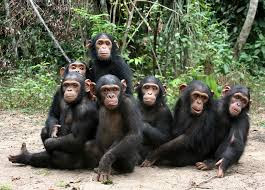
· In response to our greater understanding of our close similarity to great apes in terms of their capacity for self recognition and their innate intelligence, a movement called The Great Ape Project, calls for certain civil rights to be granted to all great apes, including the right to life, liberty and freedom from torture.
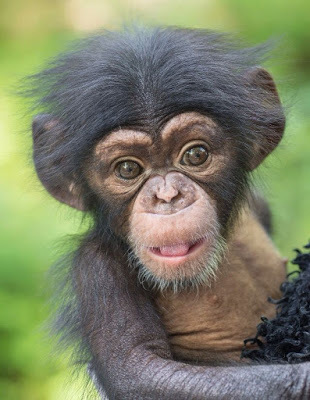
· Chimpanzees are classified as endangered in the wild. Aside from habitat loss they are hunted for bushmeat and infants taken for sale into the pet trade.
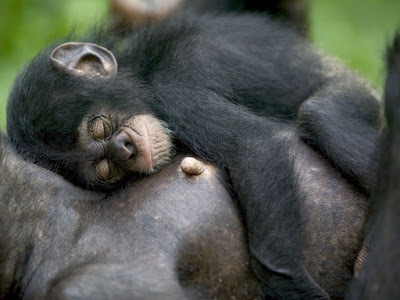
· Despite our increasing understanding of the significant similarity between humans and chimpanzees, humans continue to use chimpanzees in experiments, including experiments which cause them significant pain and suffering.

Clancy's comment: I love to watch these creatures. So enchanting and entertaining.
I'm ...


Published on November 22, 2017 11:41
November 21, 2017
22 November 2017 - WONDERFUL QUOTES
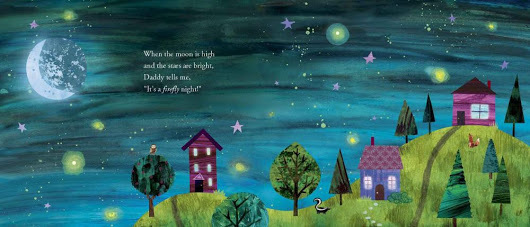
WONDERFUL QUOTES
G'day folks,
It's time for some inspiring quotes to fire you up for the day.

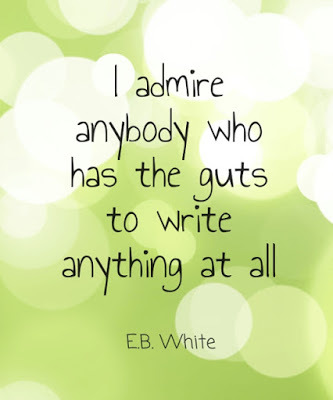
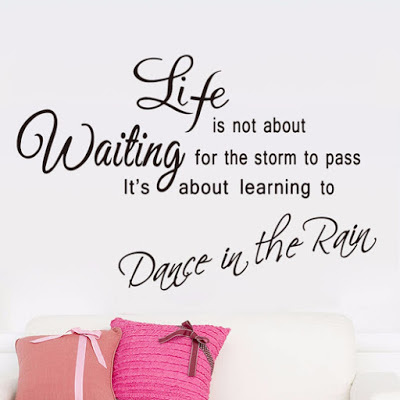




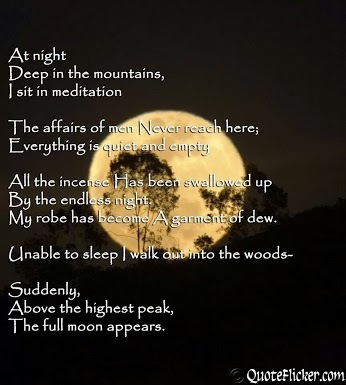


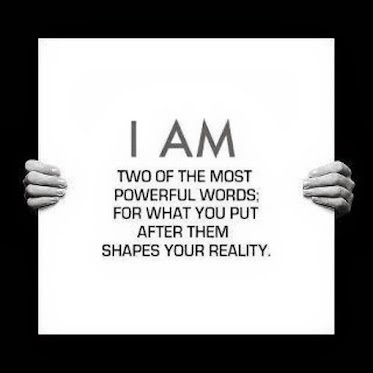

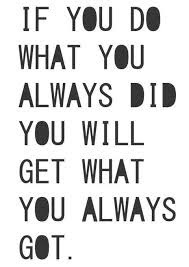
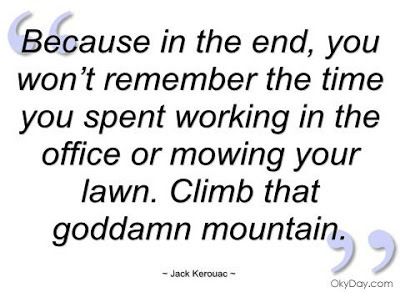
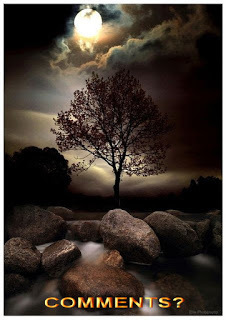
Clancy's comment: Yep, some goodies here today. Now, get cracking.
I'm ...

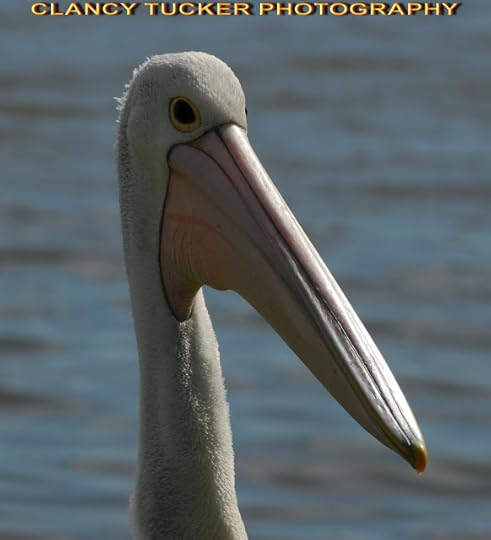
Published on November 21, 2017 04:33
November 20, 2017
21 November 2017 - THE TREEHOUSE BARS OF PARIS
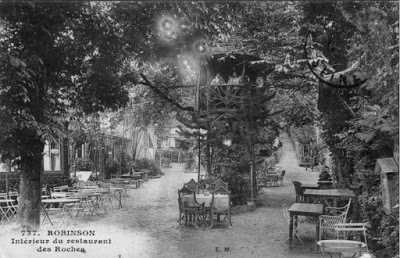
THE TREEHOUSE BARS OF PARIS
G'day folks,
T here was once a place that drew crowds of Parisians away from their grand boulevards and sidewalk cafés to rediscover their inner child, wine & dine in chestnut tree houses and celebrate summer like Robinson Crusoe.
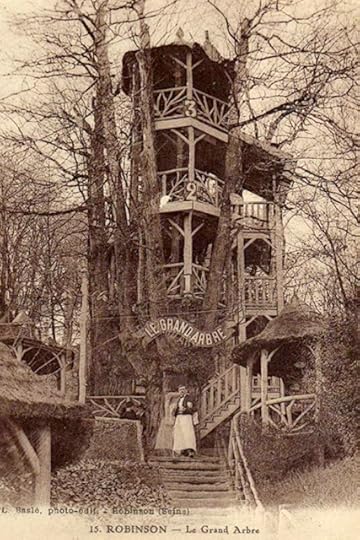
Perhaps you’ve heard of a “guingette”, a sort of French equivalent to a summer hoedown, traditionally located next to the river and particularly popular in the the 19th and early 20th century, serving food and ample drinks, accompanied by lively music and dancing. Monet and Renoir immortalised such vibrant scenes in their paintings but it seems the most enchanting of these summer establishments has been long forgotten by Parisians.

Les Guinguettes de Robinson was the place to be in the summer of the 1850s. Parisians descended to the small district south of the city en masse to relax high up in the branches of chestnut trees and dance in the forest. It all began in 1848 in the hamlet of St. Eloi when an inkeeper was inspired by the popular myth of Robinson Crusoe.
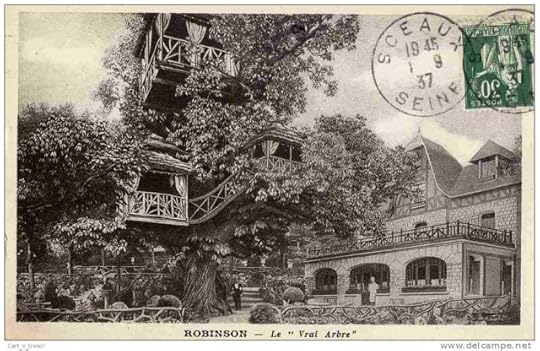
He created a restaurant perched in an old Chestnut tree he called the Grand Robinson. It was an instant success and competing taverns and restaurants multiplied quickly, adopting the same Crusoe theme along the Rue Malabry. In 1888, “Le Grand Robinson”, not to be confused with “the Grand Arbre”, which set up shop just opposite, had to change its name to “Le Vrai Arbre de Robinson” (the Real Tree Robinson”), in order to set itself apart from the competition.

Customers in chestnut treehouses were served lunch of roast chicken and champagne, their meals hoisted up to them in baskets via rope pulley systems. In 1855, a food critic wrote that ‘lavish tables were set and lovebirds without feathers but forks in hand exchanged happy kisses in the breeze, witnessed only by the foliage’.

For Parisians who couldn’t flock to the seaside during the summer months (but could now escape the city thanks to the expansion of the “suburban” railway lines around Paris in the late 1850s), Les Guingettes de Robinson provided a uniquely enchanting and exotic summer adventure. For over a century, this Robinson Crusoe Village was a Parisian paradise.


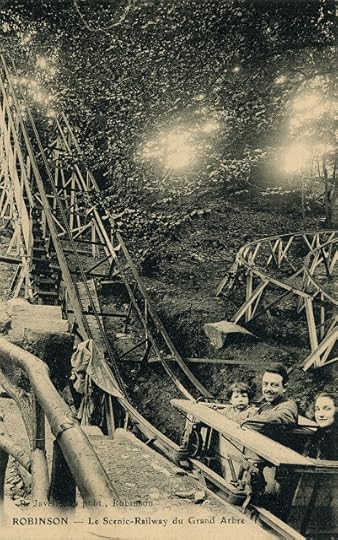
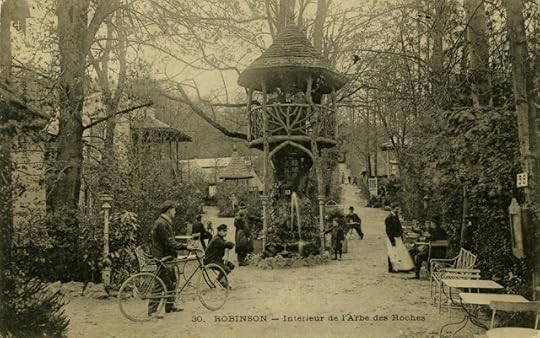

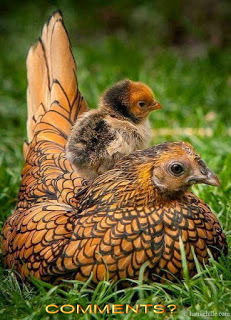
Clancy's comment: Wow. Those were the days, eh?
I'm ...
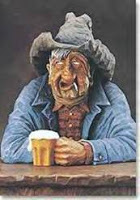

Published on November 20, 2017 12:29
November 19, 2017
20 November 2017 - THE SCARIEST HOUSE IN BELARUS

THE SCARIEST HOUSE IN BELARUS
G'day folks,
Have you got some weird neighbours? Well, check out this scary house in Belarus.
In the town of Ratomka, five kilometers from the Belorussian capital of Minsk, there is a house so spooky that some people try to avoid walking past it at all costs, especially at night. With skeletal hands coming out of the stone fence, devils decorating the roof and dozens of black skulls covering a domed structure on the property, the scariest house in Belarus is definitely a sight to behold.

Photos of the spooky house in Ratomka recently went viral in Belarus, with most people praising the owner for the bold artistic design. However, the only reason that the house even became famous in the first place was because people living in its vicinity had been complaining that it is too spooky. Some of them even filed complaints to the local authorities about it, claiming that the devils and skulls were scaring children and even adults walking by after dark, but they haven’t done anything about it yet.

“I photographed the house with my phone, to show it to colleagues at work, and then I deleted the photos because I didn’t want such devils in my phone’s memory,” Ratomka resident Maria Nikolaevna said. “From the distance, the house looked pretty, my granddaughter even compared it to a fairytale castle. But when we got closer and saw the hands coming out of the fence, and the devils on the roof, I was shocked. Now I don’t walk my granddaughter by that house anymore. At night, it’s scary even for adults, as the light reflects off those little metal devils and they look even creepier.”

One of the next-door neighbors of the house also complained that the view was horrible, with all those devils dotting the roofs, and the spooky black skulls covering the domed roof of a smaller structure resembling a crypt. He even noticed that one of the devil sculptures seems to be aiming a bow directly at his window, which makes him uneasy.

Neighbors say that the owner of the house is actually just an ordinary businessman. He started building the house a decade ago, but then went away for eight years and only cam back 2 years ago and resumed work on it. Now it’s almost finished, and people are scared he might add even more spooky elements to it before he’s done.

Like it or not, you have to agree that the decor may actually prove to be an excellent deterrent against thieves, especially if they’re the superstitious type. I would definitely think twice before going into a place like that at night.


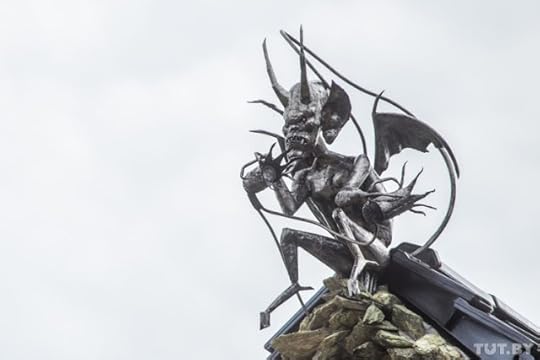

Clancy's comment: Mm ... Not my cup of tea. What about you?
I'm ...


Published on November 19, 2017 11:12
November 18, 2017
19 November 2017 - MOVING PICTURES

MOVING PICTURES
G'day folks,
Welcome to some more of those moving pictures.
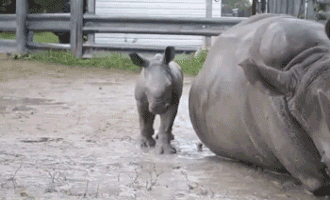




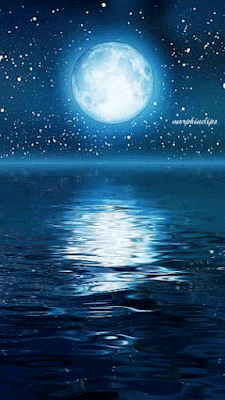
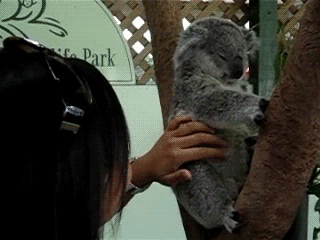
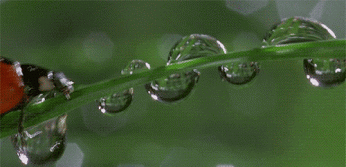
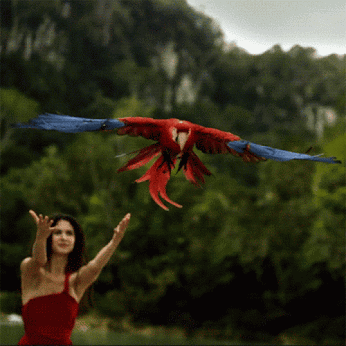
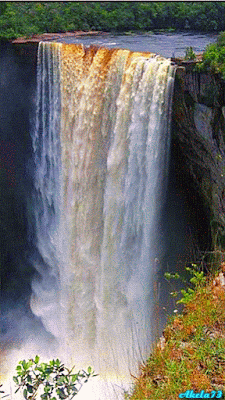
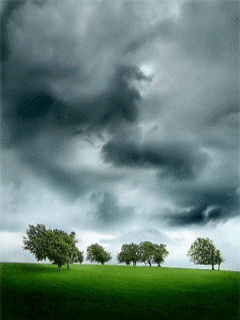


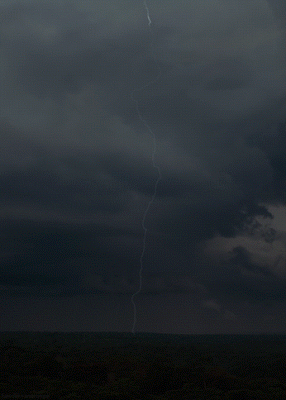


Clancy's comment: I love the lightning and storms.
I'm ...


Published on November 18, 2017 11:44



